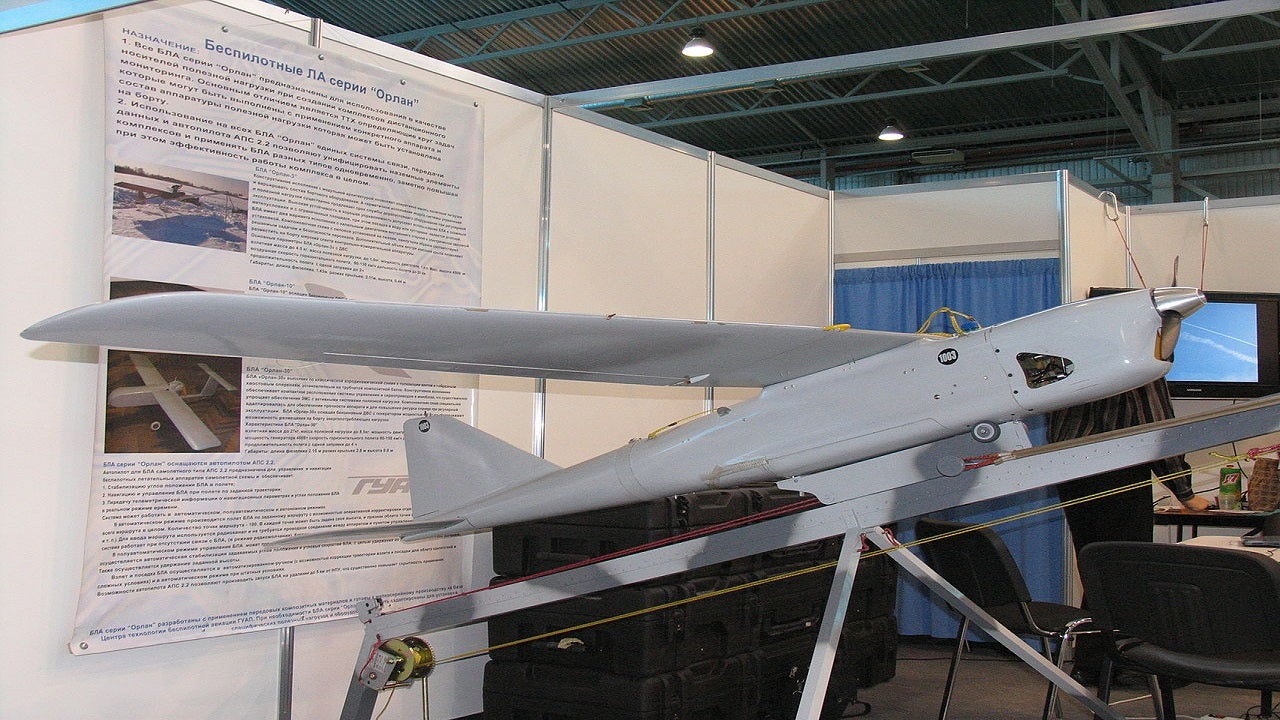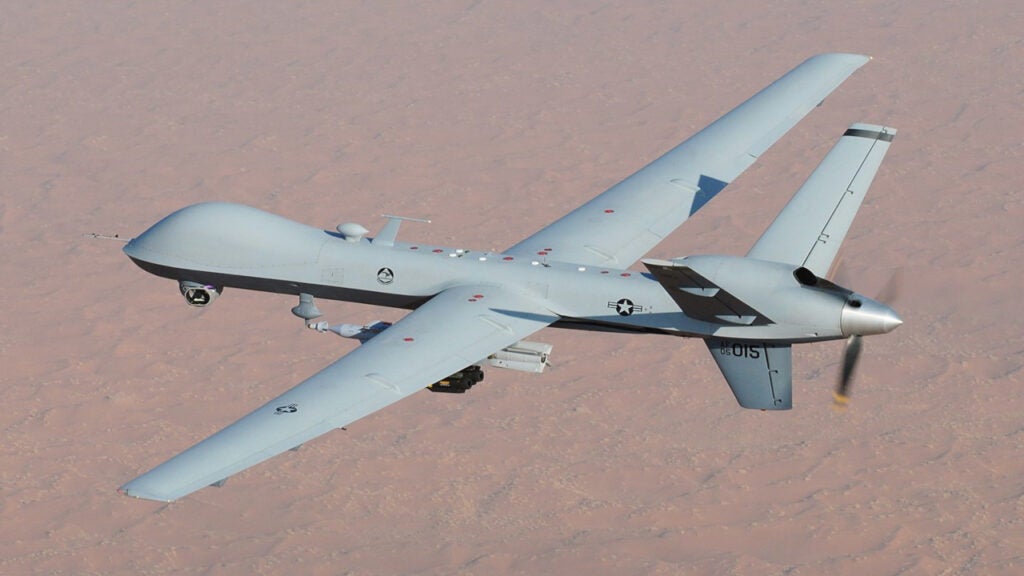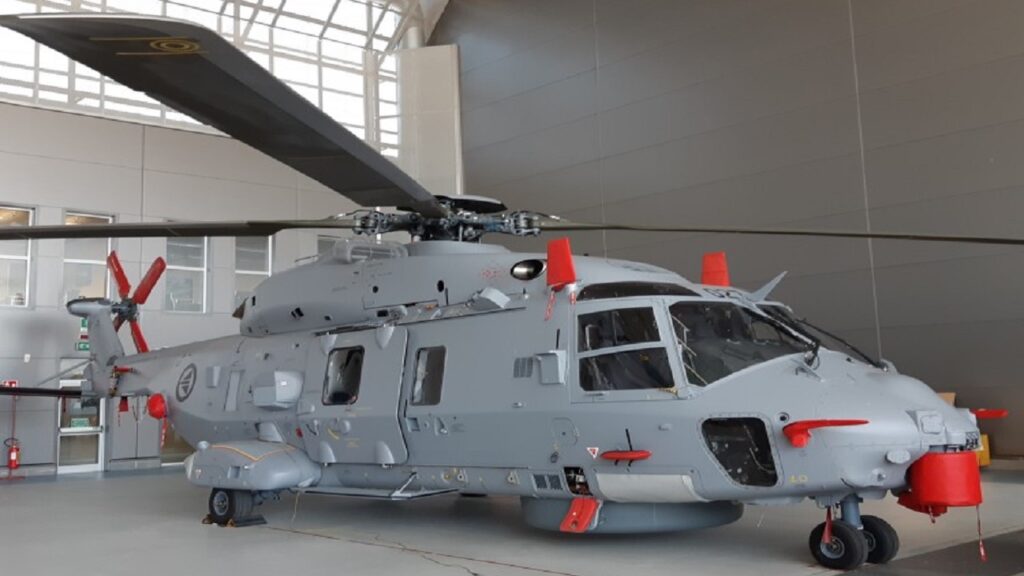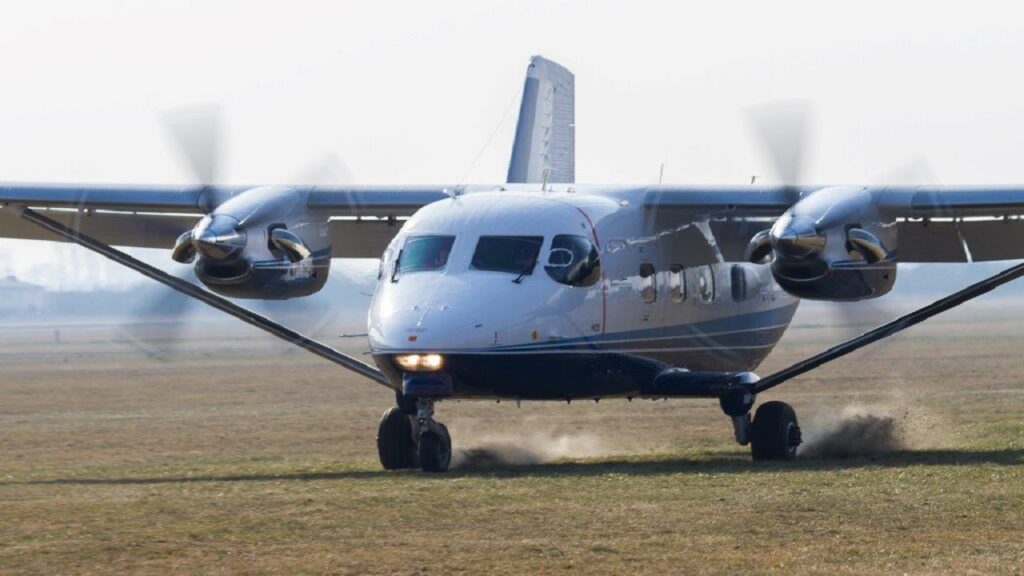
Orlan-10 is a medium-range, multi-purpose unmanned aerial vehicle (UAV) developed by Russian firm Special Technology Center LLC (ООО Специальный Технологический Центр) in St Petersburg. The UAV is in service with the Ministry of Defence of the Russian Federation.
It is intended for a variety of missions including aerial reconnaissance, observation, monitoring, search and rescue, combat training, jamming, detection of radio signals, and target tracking in hard-to-reach terrains.
The export variant, designated Orlan-10E, was exhibited at the 19th International Air and Space Fair (FIDAE) held in March 2016. Rosoboronexport announced its plans to promote the Orlan-10E UAV to foreign countries in June 2016.
Orders and deliveries
Production on the UAV was commenced in 2010. The unmanned aviation unit of Russian military base located in Armenia received Orlan-10 aerial systems in October 2015, to perform aerial reconnaissance in high-mountain areas.
The Eastern Military District of the Russian Armed Forces, located in Sakhalin, Russia, took delivery of five Orlan-10 unmanned aerial vehicles in March 2016. The UAV is also operational with the Eastern Military District in Chukotka, as well as the Black Sea Fleet.
A batch of unmanned aerial vehicles entered service with the motorised rifle unit of the Eastern Military District, stationed in the Trans-Baikal Territory, in December 2019.
The UAV entered service with the motorised riflemen of the Southern Military District (YuVO) in the North Caucasus in July 2020. The mountain motorised rifle brigade of the Central Military District, stationed in the Republic of Tyva, took delivery of the UAV in December same year.
In October 2020, Divisions of the mountain motorised rifle brigade of the Central Military District (CMD), based in the Republic of Tuva, received Orlan-10 UAVs under the state defence order.
Orlan-10 UAV design and features
The Orlan-10 complex consists of unmanned aerial vehicles, launch and recovery systems, ground control segment, and swappable payloads.
The UAV features modular design with high-wing configuration, while its tail section comprises a tailplane and a vertical stabiliser.
It has a wing span of 3.1m and its aerodynamic fuselage is 2m-long. The empty weight and maximum take-off weights of the UAV are 12.5kg and 16.5kg respectively.
The drone is launched using a collapsible catapult and recovered using parachute landing system.
Payloads carried on Orlan-10 unmanned aerial vehicle
The UAV’s modular design is provided with several interchangeable payloads allowing for greater mission flexibility.
It carries a day-light camera, a thermal imaging camera, a video camera and a radio transmitter in a gyro-stabilised camera pod that is fitted under the fuselage. The cameras provide real-time intelligence, 3D maps, surveillance, and aerial reconnaissance of ground-based targets.
The imagery, video and other sensor data collected by the payloads is transmitted to the ground control station in real-time, through a data link using 3G/4G cellular networks.
The Orlan-10 is fitted with electronic warfare capability and can differentiate between friendly and enemy means of transmitting of information. It can mount interference transmitters and set up zones for cellular jamming.
Command and control modes
The Orlan-10 can execute missions in both autonomous and remote control modes. An autopilot aboard the drone enables it to operate autonomously based on pre-defined waypoints. In this mode, the flight path can be modified by the operator during the flight.
The drone can be remotely operated by its associated ground control station, installed on MP32M1 command and control vehicle. Developed by Russian state-owned Roselectronika, the ground segment can control up to four aerial vehicles simultaneously.
In the remote control mode, operator at the mobile ground segment sends command and control data to the drone through the digital data link.
Orlan-10 UAV propulsion and performance
The Orlan-10 is powered by an internal combustion engine, driving a two-blade propeller mounted in the nose.
The drone can transmit telemetry data to a range between 120km and 600km from the launch station and endure for approximately 18 hours. Its cruising and maximum speeds are 110km/h and 150km/h respectively.
The UAV can fly at a maximum altitude of 5km in all weather conditions in difficult terrains. It can withstand wind speeds of 10m/s and operate in temperatures ranging from -30°C to 40°C.



